Pros & Cons: What We Learned From The ADCC-Bound Athletes At The WNX Finale
Pros & Cons: What We Learned From The ADCC-Bound Athletes At The WNX Finale
Just two months before ADCC, Tezos WNO: Who's Next Finale gave us important insights into the strengths and weaknesses of seven ADCC-bound grapplers.

Among the roster of athletes who competed at Tezos WNO: Who’s Next Finale, there were four ADCC Trials Winners, two ADCC 2022 invitees, and one returning ADCC Champion.
With the 2022 ADCC World Championships just two months away, each of these athletes had ADCC on their minds, and ADCC training influencing their habits on the mat during the WNX finale. Each of the seven WNO athletes headed to ADCC played a game which reflects on their preparation for the historic event in September.
Giancarlo Bodoni, Jay Rodriguez, Pedro Marinho, Dan Manasoiu, Nicholas Meregali, Izaak Michell and Gordon Ryan demonstrated their strengths and their weaknesses ahead of ADCC, leaving us an opportunity to gauge their preparedness for the big event in Las Vegas.
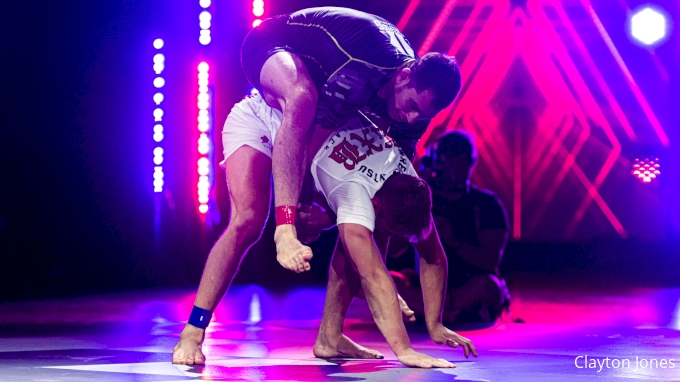
Giancarlo Bodoni
Pro: Giancarlo Bodoni quickly took control of the match against a sharp wrestler in Jay Rodriguez, utilizing an armdrag-trip to attain back control, where he iced Jay Rod for most of the 15-minute bout. ADCC is all about momentum, and if Bodoni can routinely assert control over his opponents in the early game, he’ll have the upper hand in managing the scoreboard, the clock, and the mat overall.
Con: Despite nearly ten minutes of back control against Jay Rod, Bodoni could not secure a finish. While he methodically dismantled Jay Rod’s defenses, he failed to capitalize. Bodoni’s effort seemed to exhaust himself more than it did his opponent, leaving Bodoni defensive for the final portion of the match after Rodriguez escaped. Bodoni’s inability to finish against the relative newcomer, Jay Rod, does not bode well for him in the 88 kg division, which is filled with veteran grapplers notoriously difficult to submit. Among them: Lucas “Hulk” Barbosa, Matheus Diniz, Tye Ruotolo, Vagner Rocha and Xande Ribeiro. If Bodoni can maintain a habit of earning an early advantage on position and points, his ability or inability to finish won’t ultimately matter. But in a situation where Bodoni needs a submission to win, this apparent deficiency may prove fatal to his podium hopes.
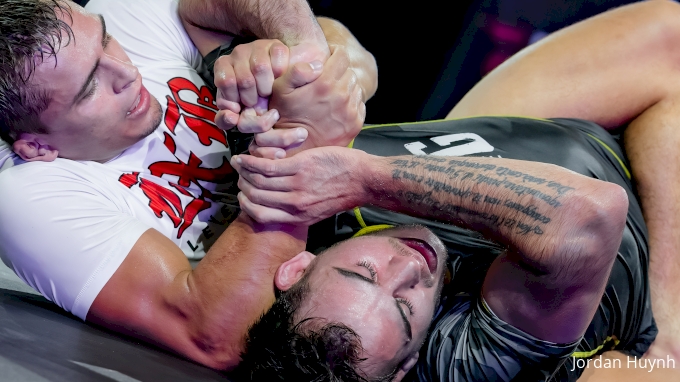
Jay Rodriguez
Pro: Jay Rod’s gas tank has never been as apparent as it was at the 11-minute mark of his match against Bodoni, when he finally escaped from back control, and started to attack as if the match had only just started. His cardio and resilience will be major factors in the 88 kg division, one of the oldest on average. He will be one of the youngest in this division, and has proven he can capitalize on his youthful cardio as long as he is not reckless about it.
Con: Throughout his short time in the spotlight, Jay Rod has proven himself to be a high risk, high reward grappler. He’s made his share of technical and strategic mistakes, and has frequently found his way out of bad positions and turned his misfortune into offense. Still, there’s a significant difference between escaping from opponents at ADCC Trials, — and even Trials winners such as Giancarlo Bodoni — and the best in the world. Jay Rod will be hard pressed to manage those same escapes against any of those (above listed) top-tier ADCC competitors decorating the 88 kg division.
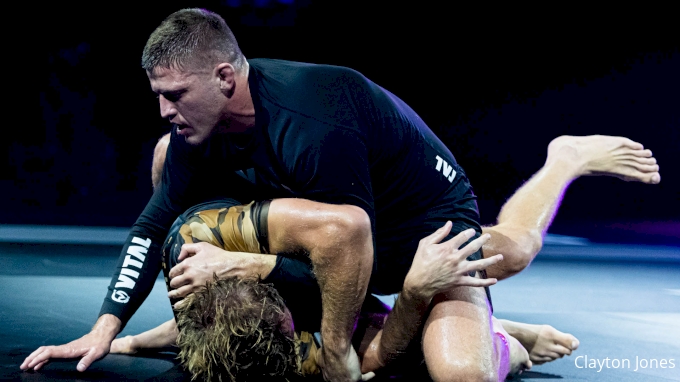
Nicholas Meregali
Pro: In each of his first two no-gi matches, Nicholas Meregali has appeared dedicated to the strategy. And on both occasions, that strategy has proven successful. Takedown. Control. Finish. Meregali appears to be working a step-by-step progression of the skills needed to succeed at ADCC. And if he can continue to stick to this methodology, Meregali will pave his best possible opportunity to realize that success.
Con: Because Meregali has stuck to the plan, and because that plan has been infallible in his first two matches, we have not yet seen how the IBJJF World Champion reacts when things don’t go according to plan. In his match against Breylor Grout at WNO, Meregali attempted a few armbars which were unsuccessful, but he was able to quickly rinse and repeat his gameplan. We have not yet seen how Meregali will respond against an opponent capable of capitalizing on his mistake. He has not yet been challenged to depart from his fundamental strategy. We are left to wonder how capable he is of responding when the match does not accord with the plan.
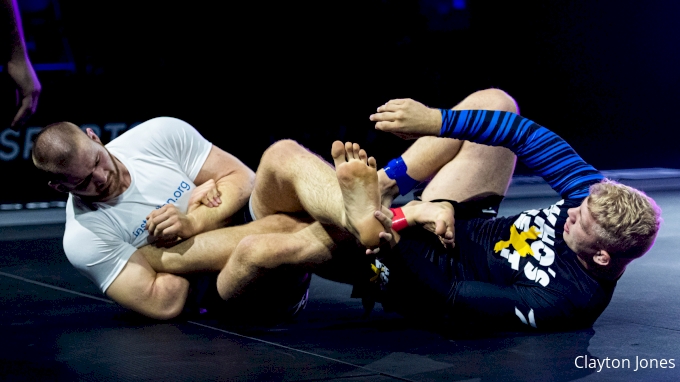
Big Dan Manasoiu
Pro: Dan Manasoiu has teased his ability to break limbs in the past, but his match against Tristan Overvig left no doubt of that fact. Manasoiu’s heel hook shattered Overvig’s leg, and must have sent a message to those ADCC-bound grapplers lacking confidence in their leg lock defenses. Manasoiu’s breaking power could inspire caution from many of the 99+ kg grapplers headed to ADCC, giving Manasoiu — if nothing else — a psychological advantage.
Con: Big Dan dominated the match vs Overvig from feet to floor, scoring the takedown and then attacking incessantly until achieving the finish. But his pursuit of the finish early in the match, coupled with his performance during the Who’s Next show, indicate that the young heavyweight is sometimes trigger happy with leglocks. There’s a good reason for this; Manasoiu obviously has the force, the leverage, the technique to snap a leg. But against the best in the world, he may leave himself exposed if he’s not patient in setting up his submissions.

Izaak Michell
Pro: Izaak Michell’s endurance throughout his 131-minute match with Kyle Chambers was nothing short of awe-inspiring. Michell attacked for nearly all of the match, passing, achieving back control, and searching for the finish. His will to continue fighting will be necessary in an 88 kg ADCC division filled with some of the most resilient athletes in grappling. And, should he prove able to take any of his opponents to the mat, his passing game, which helped him to dominate Chambers throughout, will give him considerable advantage over a division of athletes who largely favor top position.
Con: Chambers’ shell-like defense did not allow Michell many opportunities to try to finish the match. And Michell showed incredible patience, waiting for his chances, rather than forcing them. Still, his wantonness to stay the course begs the question: if Michell is in a situation where he needs to submit his opponent, is he willing to take a risk?
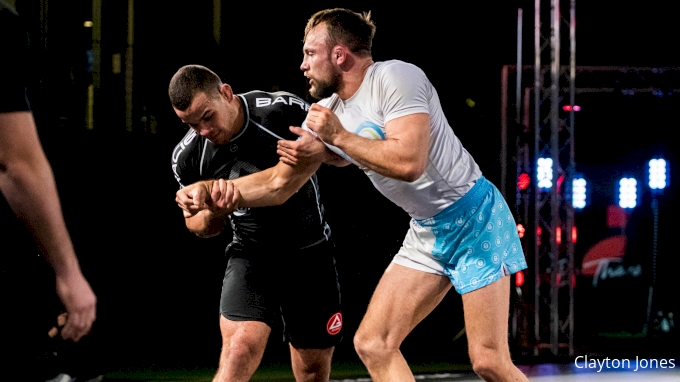
Pedro Marinho
Pro: Forget whatever it is you think Gordon Ryan taught you about Pedro Marinho.
Despite being dominated for nearly 25-minutes at WNO, Marinho is one of the best grapplers in the world. It’s easy to overlook the fact that he’s held the rank of black belt for less than 18 months. He’s a no-gi world champion, a WNO champion, a sharp strategist and a bruiser on the feet. But through enduring 20-minutes of brutal punishment from the mount position against Gordon Ryan, Manrinho also proved his resilience. Few athletes have been capable of forcing Gordon Ryan to take an alternative strategy to finish. And probably no athlete other than Gordon could put that kind of pressure on Marinho. If Marinho is capable of enduring the menacing game of Gordon Ryan, he’s capable of standing toe to toe with the best in the 99 kg division, namely: Craig Jones, Kaynan Duarte, Rafael Lovato Jr, Nicholas Meregali, Vinicius “Trator” Ferreira and Yuri Simoes.
Con: Gordon called it out, then proved his point. Pedro Marinho’s guard game is lacking, relative to his takedown and passing abilities. If anyone in the 99 kg division can put Marinho on his back, Marinho could be at a considerable disadvantage. Few will be able to smother him the way Gordon did, but many may look to try after the demonstration of control by Gordon Ryan.
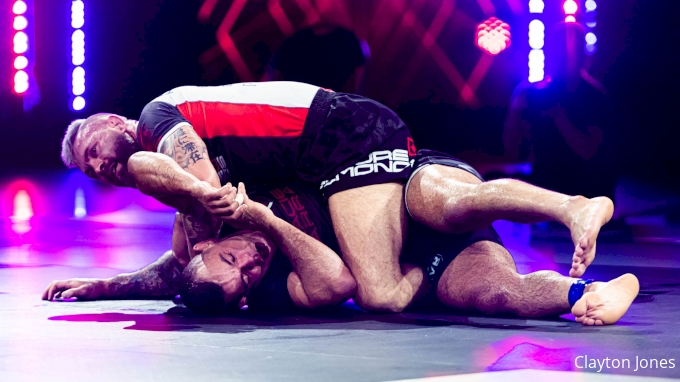
Gordon Ryan
Pro: At ADCC 2017, Gordon Ryan showed off his guard work and leg lock abilities, leaning on those for a path to his first ADCC medal. In 2019, he utilized economic guard play in conjunction with pressure passing and back control. But in his last few matches, Gordon Ryan has proven that his ability to attack, and to create immense pressure from top control and mount constitute his A-game.
To take down Pedro Marinho and to hold him down for 20 minutes straight suggests that Gordon Ryan’s game is not just complete, but dominant in every imaginable scenario. The 99+ kg division is filled with ADCC medalists and champions. But after his most recent WNO performance, it’s hard to imagine him losing for technical inferiority.
Con: What can be said in criticism of the most recent, utterly masterful performance of Gordon Ryan? Perhaps, to echo the carping of his critics, Gordon has not competed outside of his favored 30-minute submission-only WNO ruleset since June 2020. In that particular ruleset, action and aggression are rewarded by the judges, and insisted upon by the referees, begging his opponents to engage early and often.
But this may put Gordon in a difficult situation when he meets a master strategist — say, Andre Galvao — at ADCC. Galvao will look to engage on his own terms, disengage on his own terms, and play the clock, the scoreboard, and the rules to put outside pressures on Gordon, who’s ability to win is seldom challenged by outside factors. Gordon Ryan has an unparalleled ability to win when submission is the only factor. But not since ADCC 2019 has he had to face an opponent willing to win on the scoreboard, willing to look to the rulebook for every advantage.